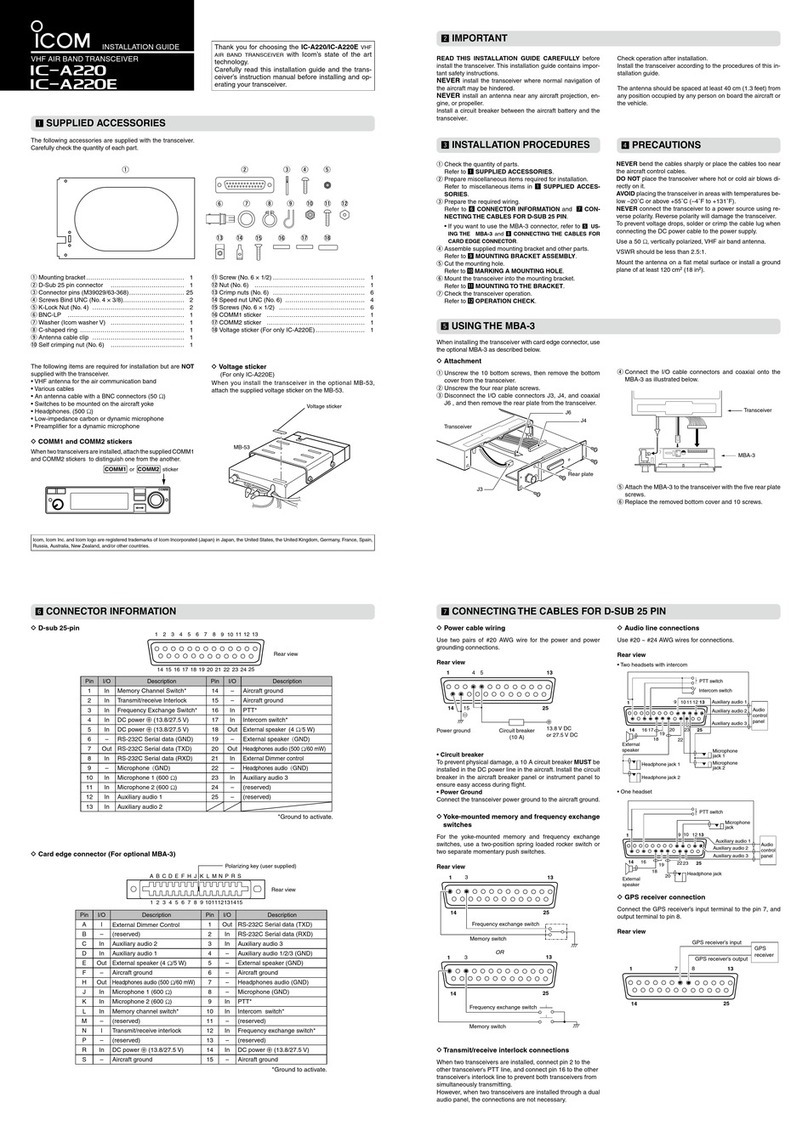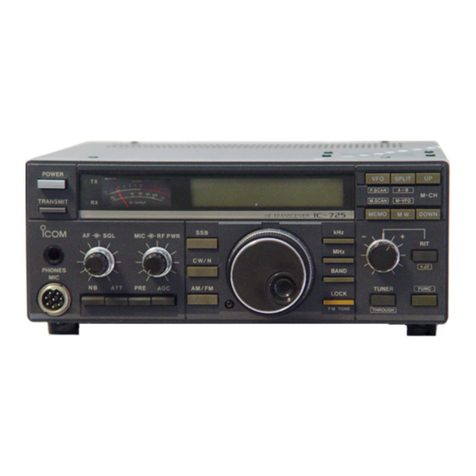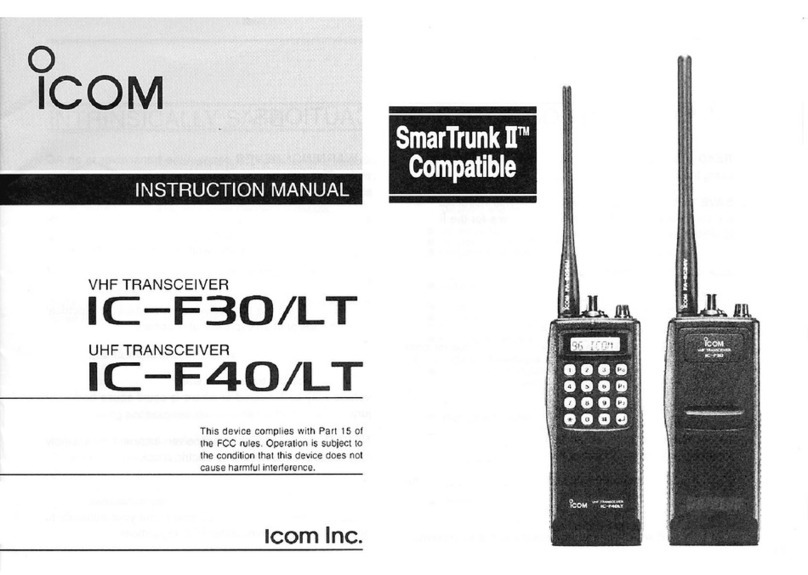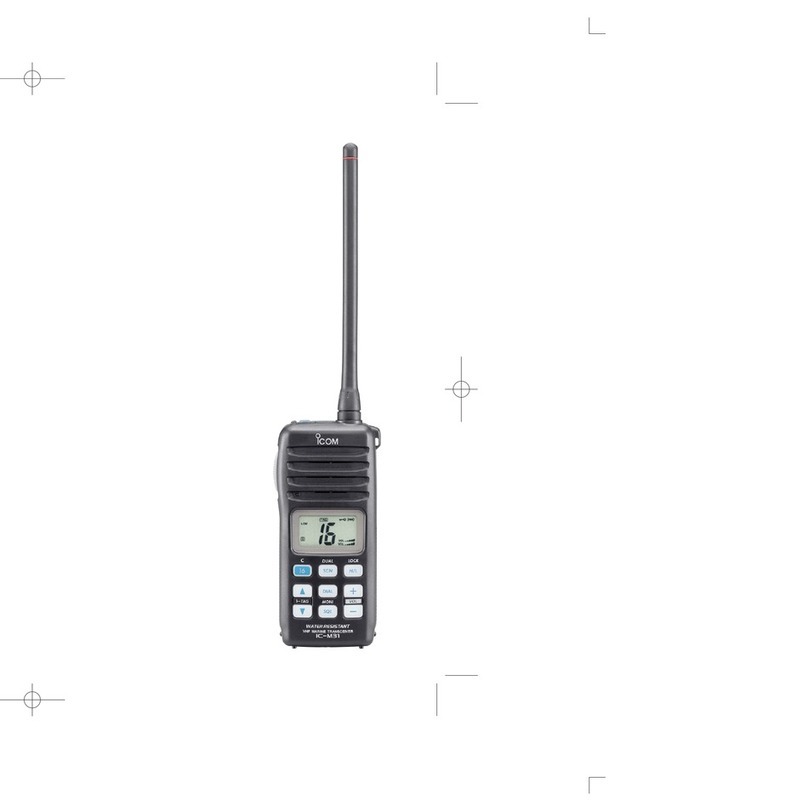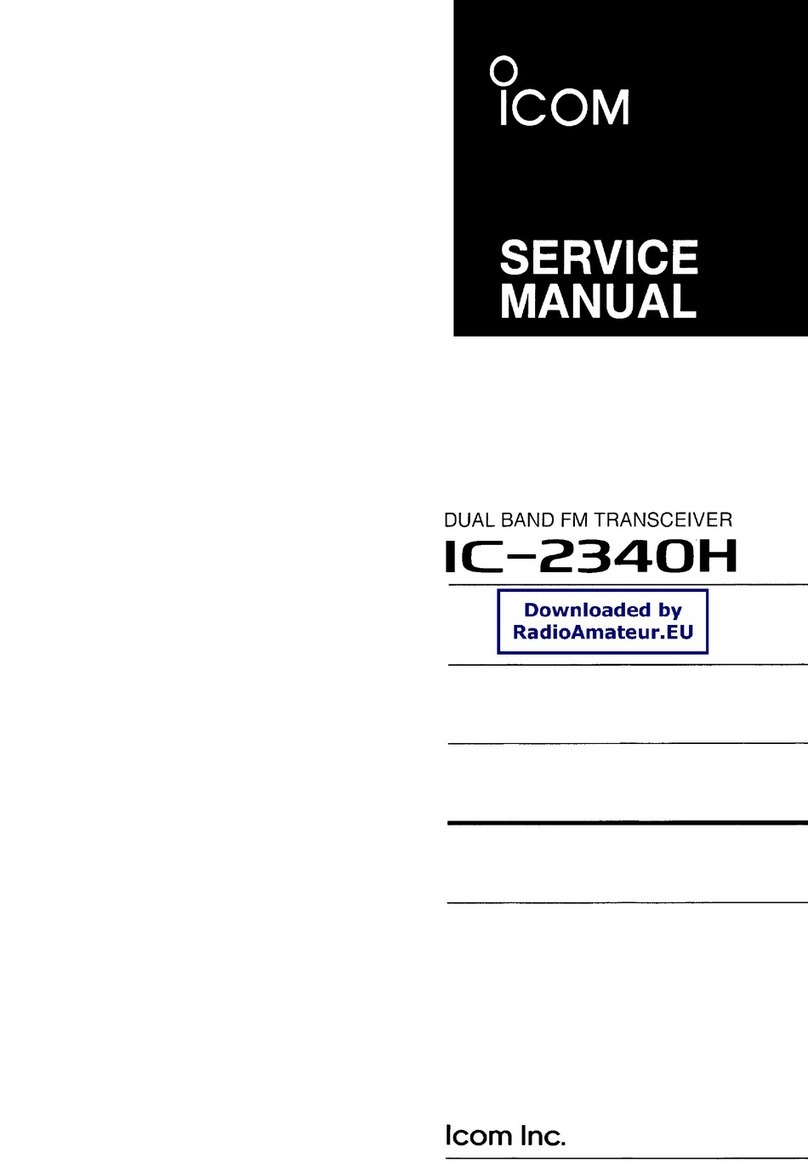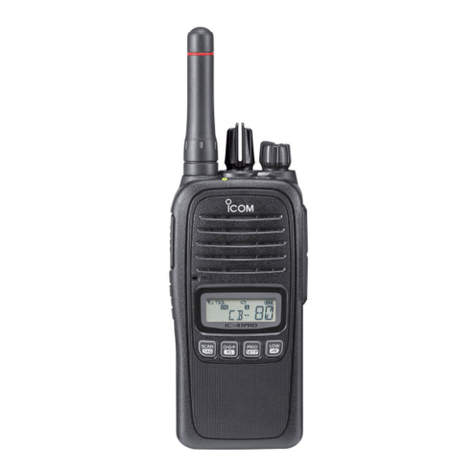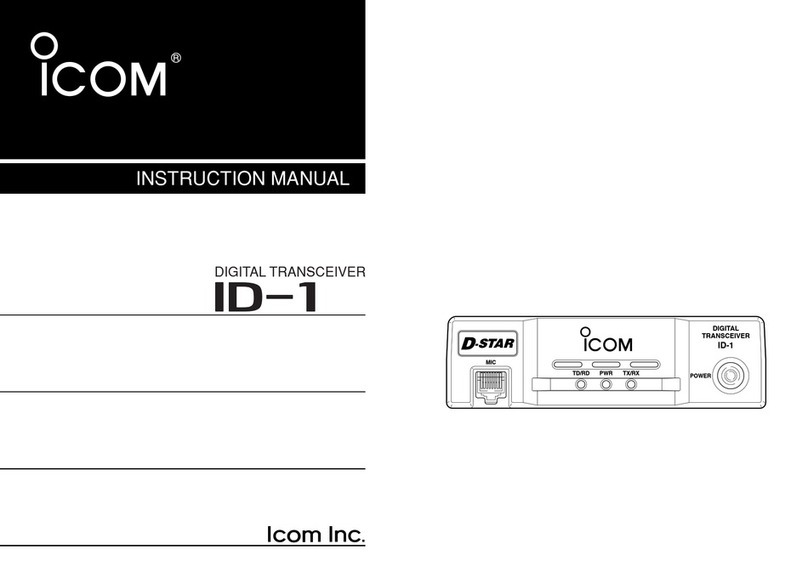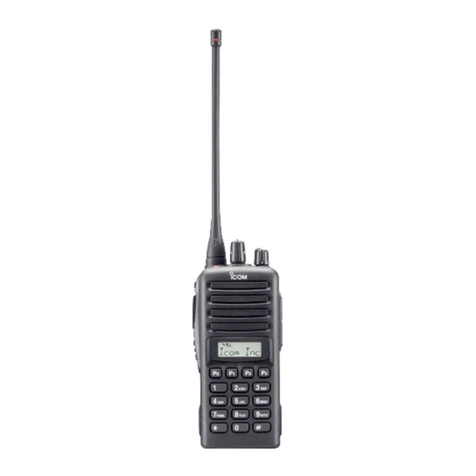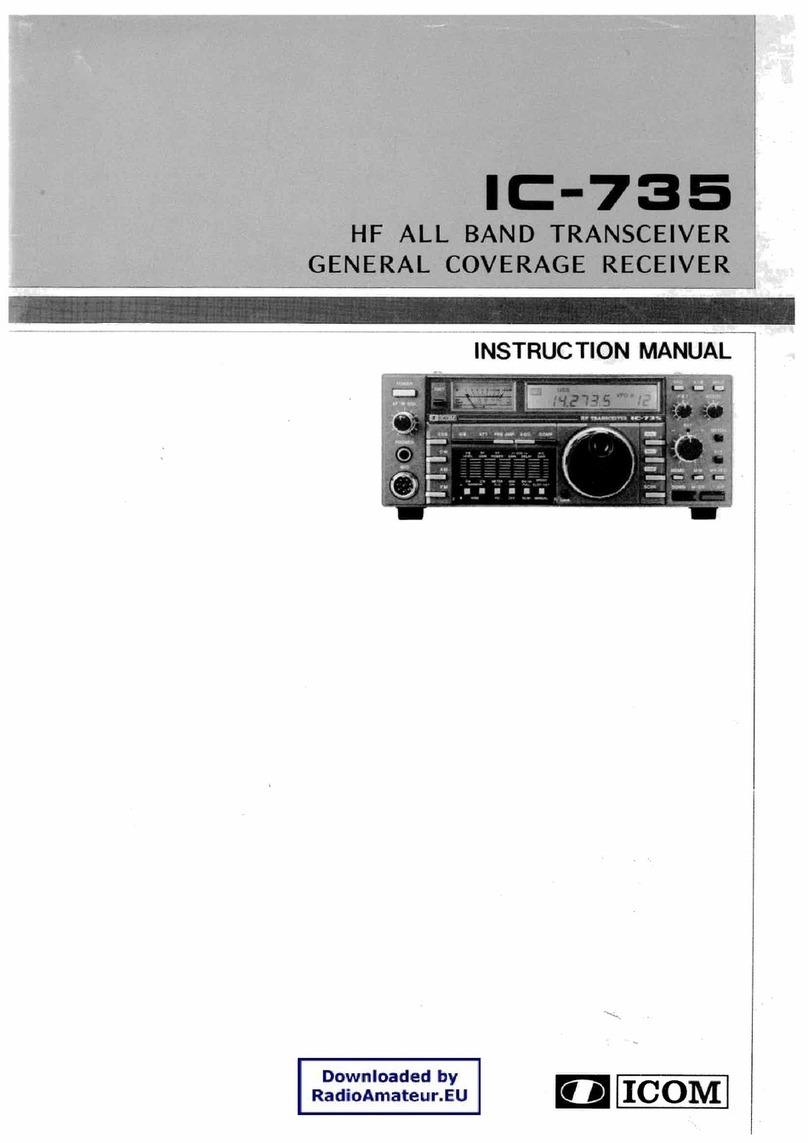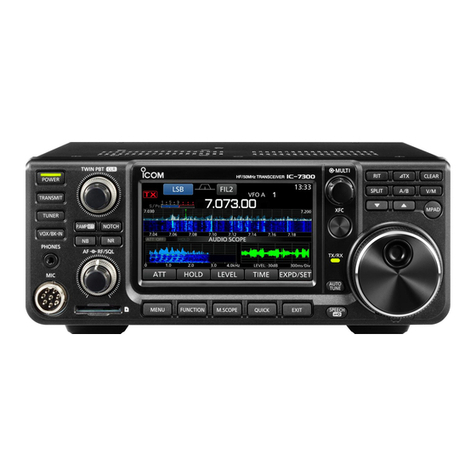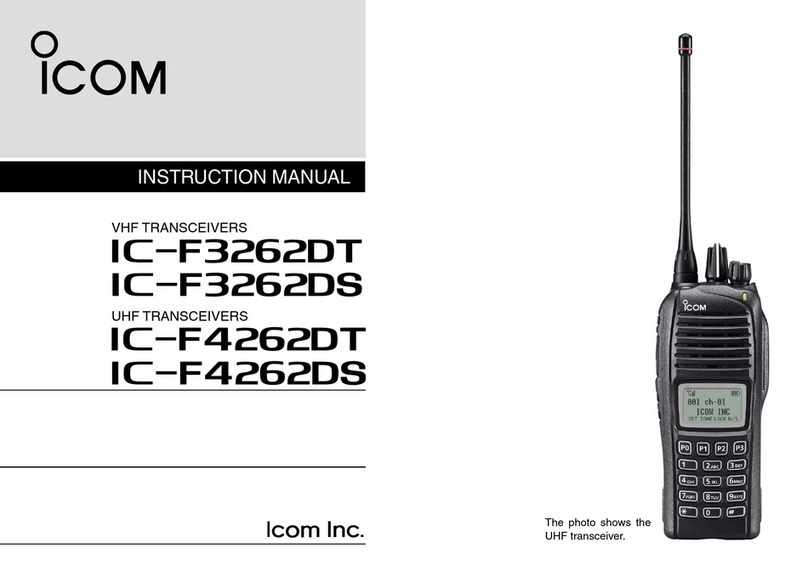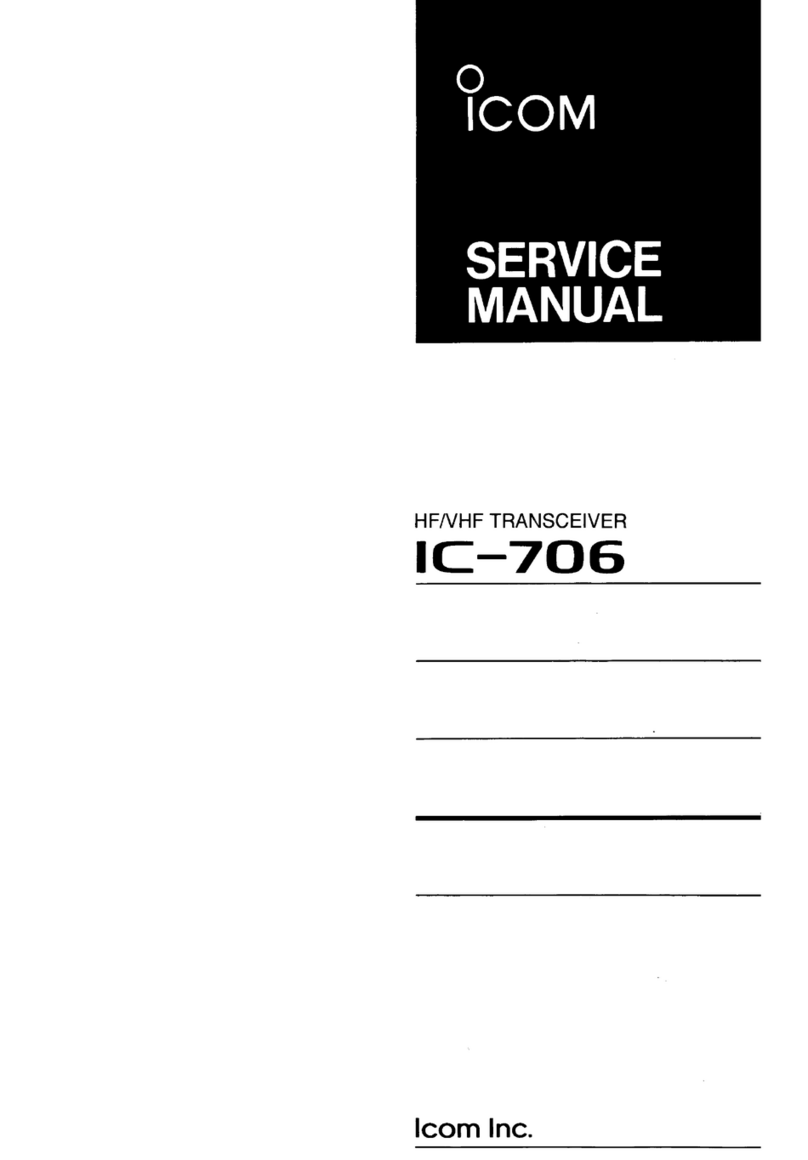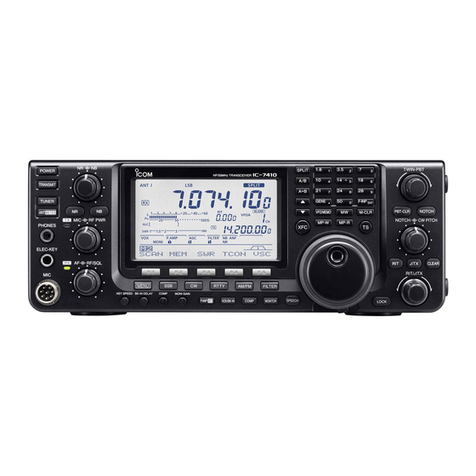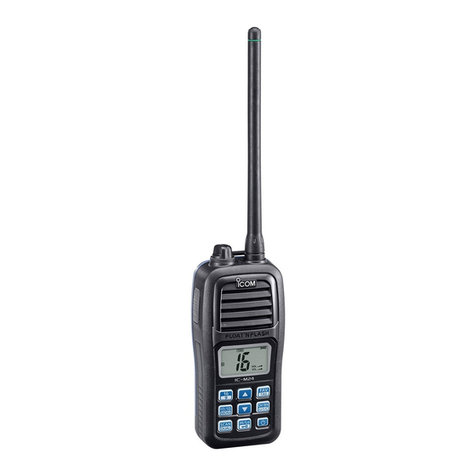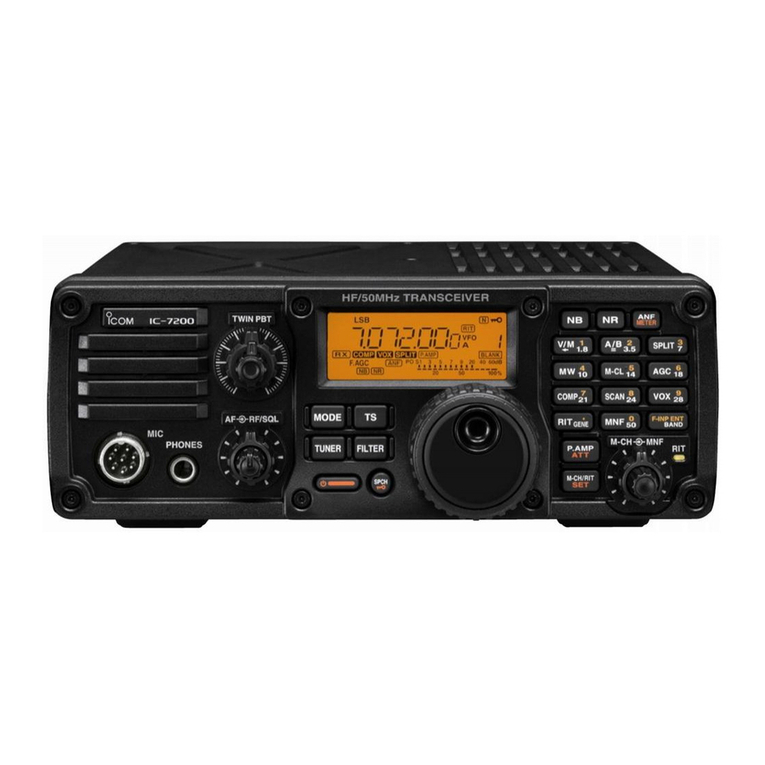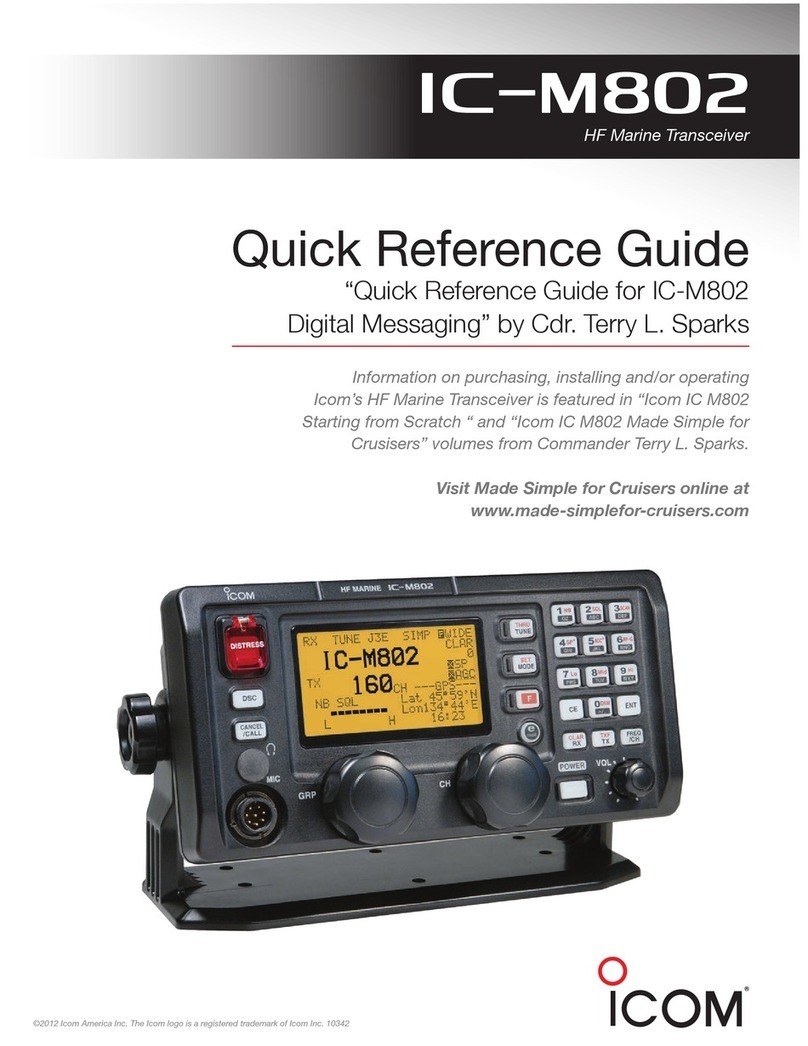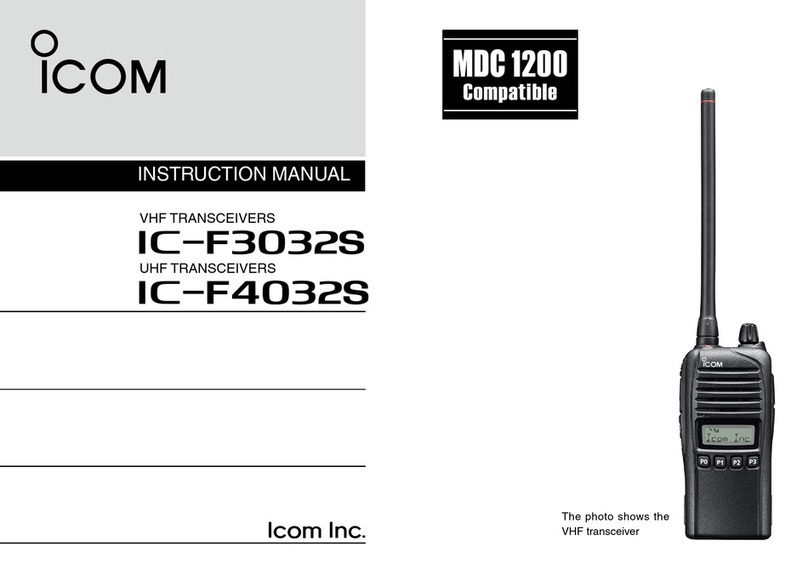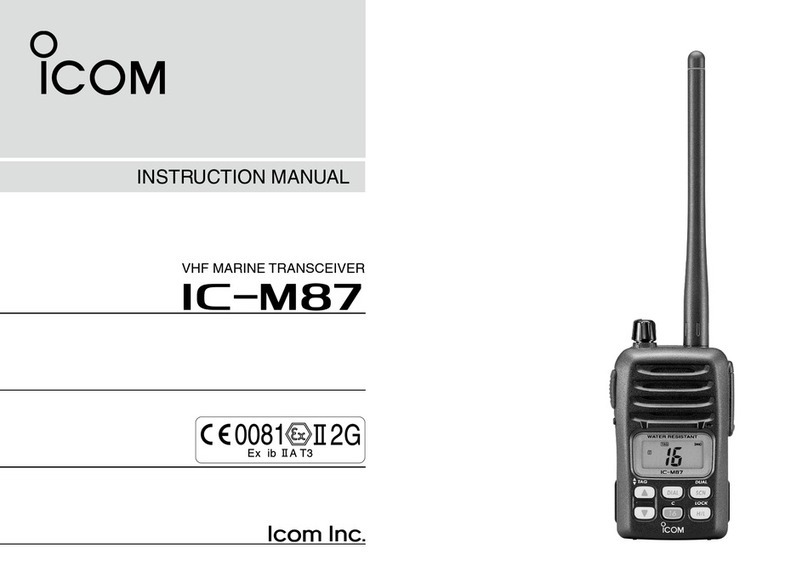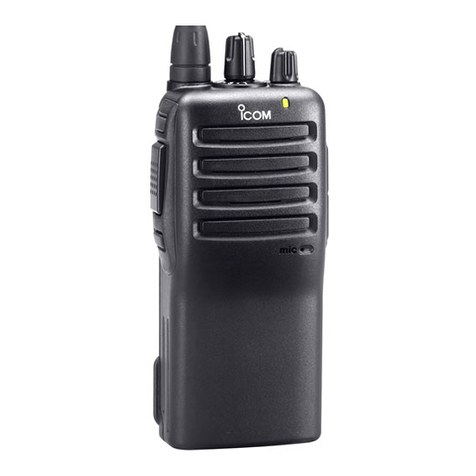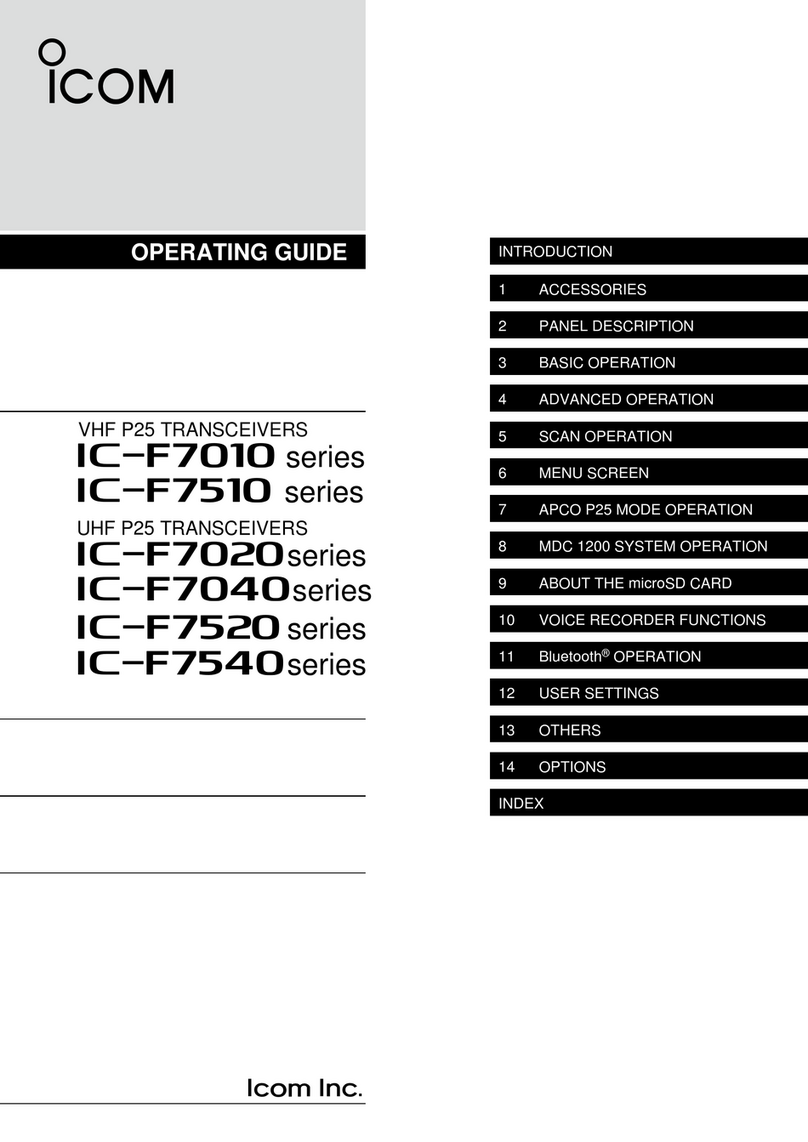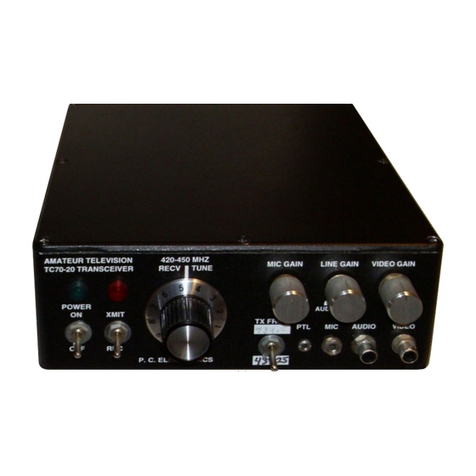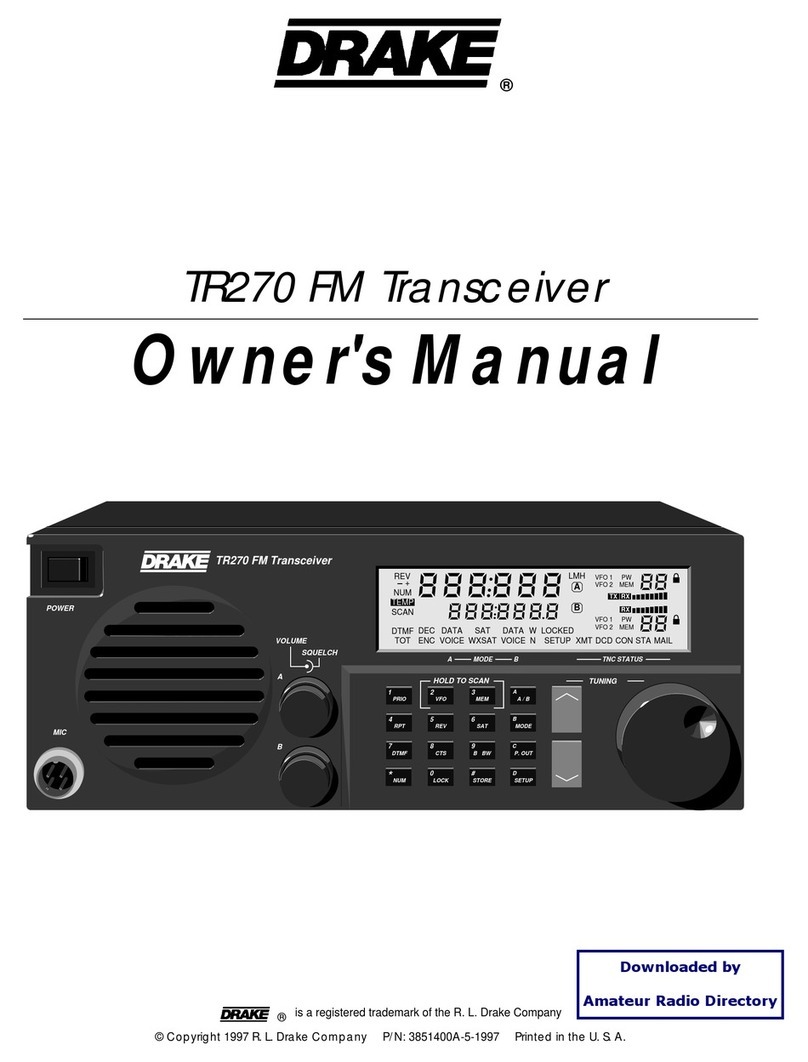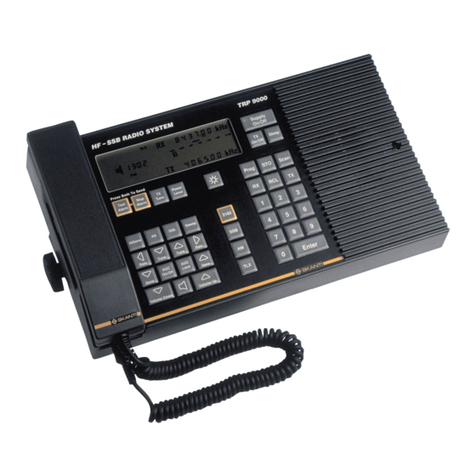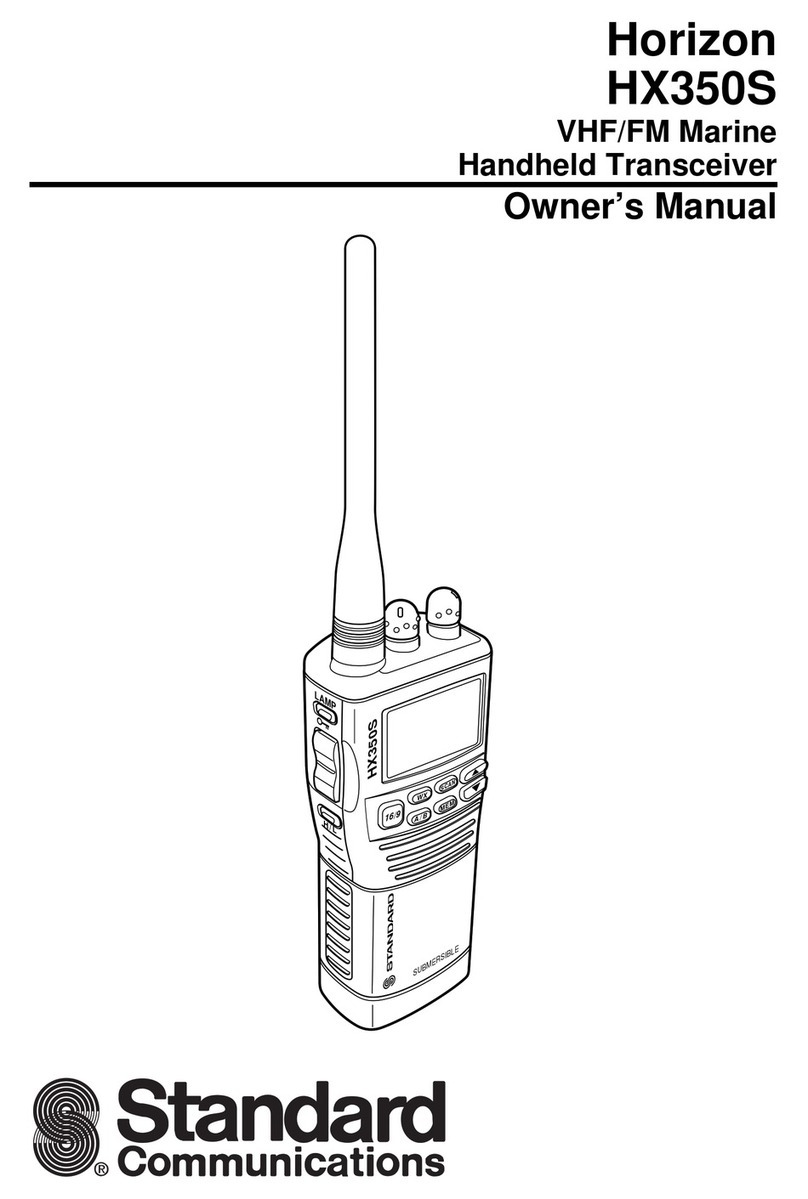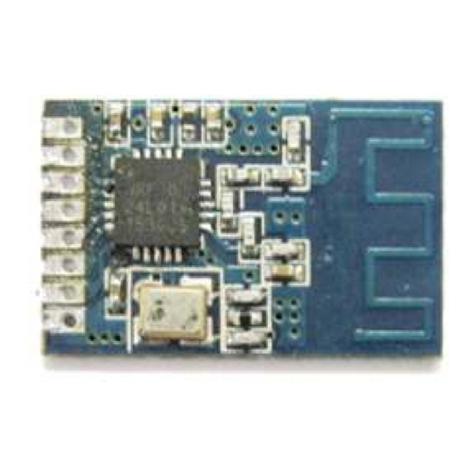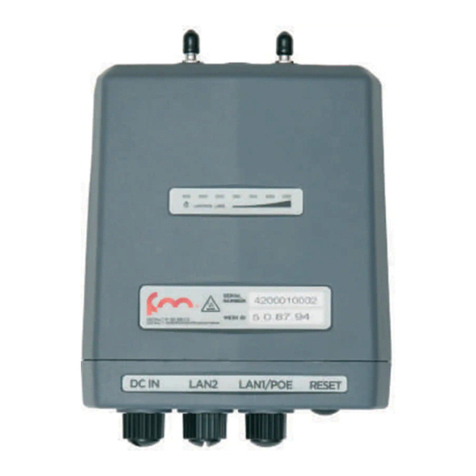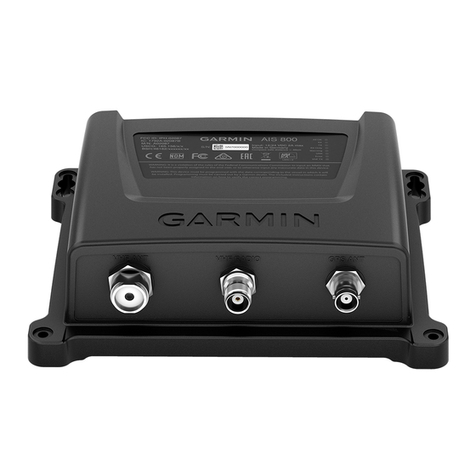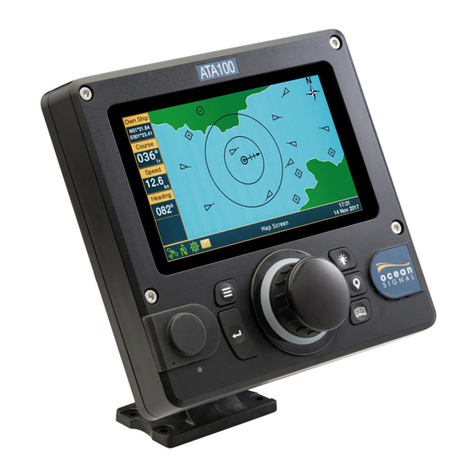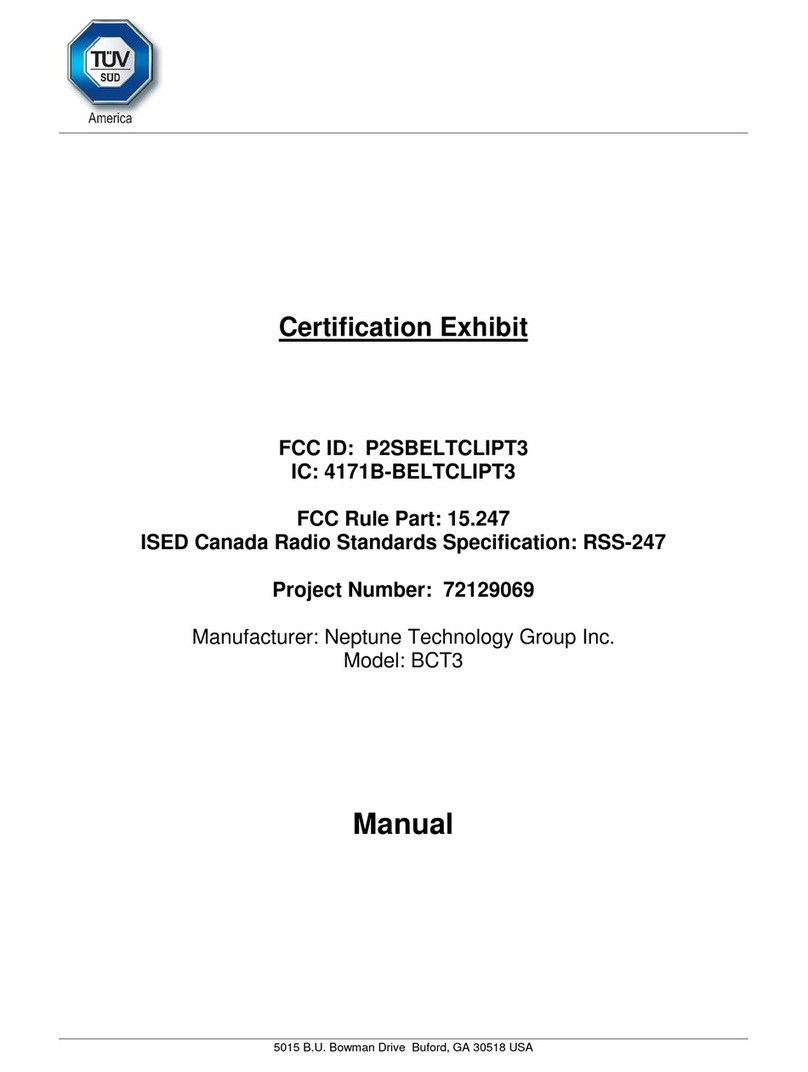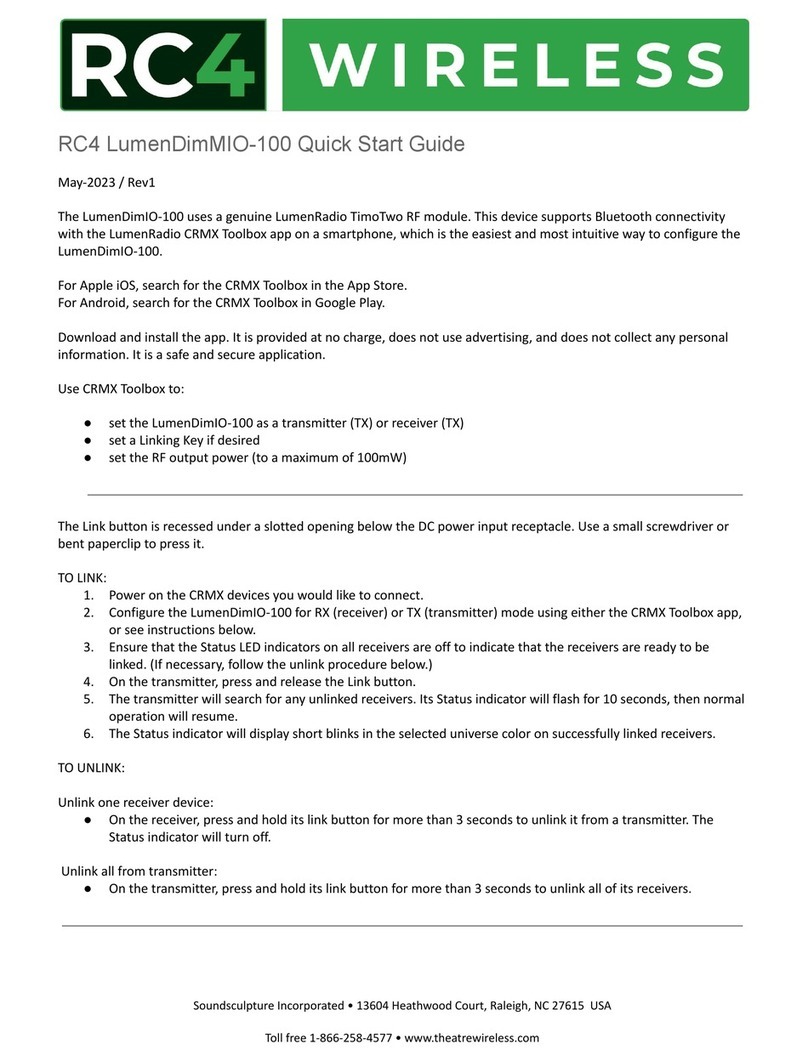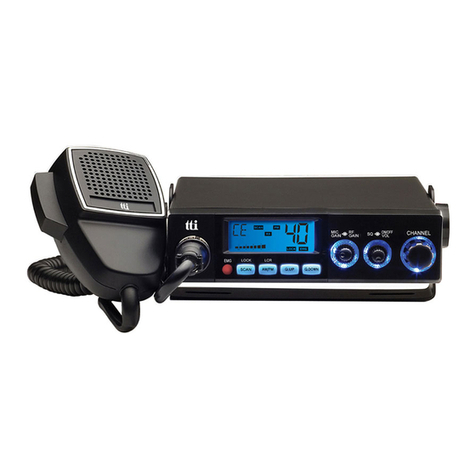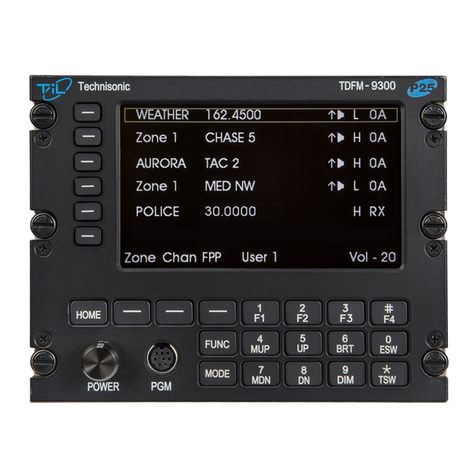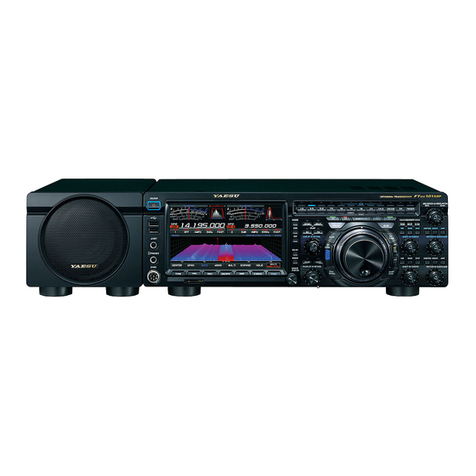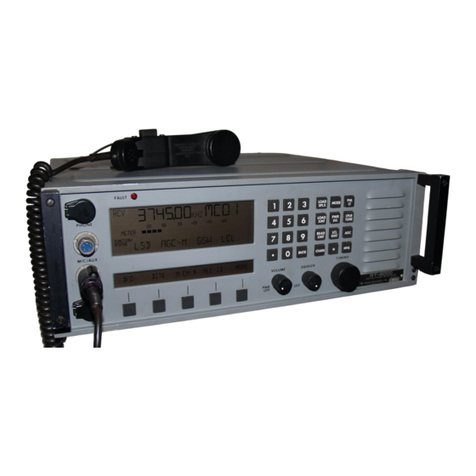Icom ID-51A User manual

QST Product Review
QST Magazine is owned and published by
the American Radio Relay League (ARRL).
Icom America expresses its gratitude to the ARRL for the
permission to reprint and post this review on our Website.
This product review remains the copyright of the ARRL.
To join the ARRL, please visit www.arrl.org
ID-51A
VHF / UHF Dual Band Transceiver
©2013 Icom America Inc. The Icom logo is a registered trademark of Icom Inc.

Reprinted from December 2013 QST ARRL, the national association for Amateur Radio®www.arrl.org
on D-STAR took some patience as there was
frustration with entries in fields changing
without operator knowledge, caused by some
of the early system and radio nuances. The
learning curve looked like a Nordic ski jump.
Numerous D-STAR radios have succeeded
the ’2200H for user-friendliness and function-
ality. Icom’s newest in this line is the ID-51A,
the first D-STAR radio I’ve used since the
’2200H. The evolution has been profound.
Major Innovations
For me, the single most significant enhance-
ment in the ID-51 is the incorporation and
application of a GPS receiver. The application
that is most useful is when the operator is
mobile and pushes the NEAR REPEATER button
in the D-STAR Repeater (DR) mode to find
and select the closest D-STAR repeater. With
access to it, the operator can then proceed
with the panoply of functions and networking
available to the system. With the DR mode,
programming is simplified with UP, DOWN,
and ENTER buttons to be pushed while scroll-
ing through the easy-to-read menus. In fact,
it’s the only way to go while away from your
home area and home access repeater. (While
in your home area, it’s easier to simply pro-
gram your local repeater and frequently used
commands — such as linking to your favorite
reflectors — into the rig’s memory channels).
Sooner or later, almost every handheld
will have a GPS receiver and an updatable,
onboard directory for all repeaters, digital or
analog. It’s just a matter of time before mo-
bile FM and digital operators will simply
push the “find nearest repeaters” button,
and start talking. (There’s an app on my
iPhone called Freq Finder that updates
its repeater listings periodically and
displays operating parameters for
machines closest to me — it works
great.)
Fun and Function
The ID-51A is laden (not burdened) with
the most functions of any radio I’ve ever
used. A bit daunting and intimidating at
first, the radio comes with two manuals:
A 54 page Basic Instructions manual, and a
whopping 369 page Advanced Instructions
manual. But, the power is in the pushbuttons.
Six buttons and a “D-pad” in the middle of the
front panel under the large display are all you
need to control the radio. For the most part,
operation is intuitive, especially if the operator
already has D-STAR experience. The MENU
key gives access to the comprehensive
menu selections, while the QUICK key
provides quick access to those func-
tions that are used more frequently.
The QUICK key is context sensitive for
what the user is doing at the time (for
example, character editing functions
when entering data).
A MODE/SCAN key changes modes and
starts scans. A MAIN/DUAL key selects
the VFO band and frequencies to be
displayed on the screen. A V/MHZ/CLR/
LOW button puts the rig in the VFO
mode versus the M/CALL/S.MW, which
selects the memory channels and
functions.
D-STAR-specific functions can be
manipulated with the D-pad in the
center of the face. Starting at the
Technical
by Mark Spencer, WA8SME
Icom ID-51A Dual Band Handheld
Transceiver with D-STAR
Analog FM, D-STAR and much more in a compact, dual-band handheld.
Product Review
Bottom Line
Icom’s ID-51A dual band handheld is
a feature laden analog FM and D-STAR
digital transceiver with a GPS receiver
and a host of available options. This
is perhaps the most flexible handheld
available, and you’ll need to spend
some time learning the radio’s opera-
tion to get the most from it.
Reviewed by Rick Palm, K1CE
Contributing Editor
Just when you thought the ubiquitous hand-
held transceiver, a staple of Amateur Radio
since the early 1970s, had reached its evo-
lutionary limit, it’s time to think again. This
has certainly been the case with the protocol
Digital Smart Technology for Amateur Radio,
more popularly known as D-STAR, and the
parade of radios released by Icom over the
years to support it. The ID-51A is the second
in a new series of D-STAR capable handhelds
from Icom. A 70 centimeter model, the
ID-31A, was reviewed in the August 2012
issue of QST.1
I was involved as a user early in D-STAR
development here in the southeastern portion
of the US, where it seemed to take off more
quickly than in some other parts of the coun-
try. This was probably due to a few dynamic,
enthusiastic individuals here who pushed it
through, conducting seminars at club meet-
ings and “Elmering” individual operators at
conferences and on the air. That was the case
with me as I drove down to my local ham radio
supply store in Orlando several years ago to
have a chip installed in my IC-2200H, which
would give me access to the D-STAR system.
Programming and operating the IC-2200H
1S. Ford, WB8IMY, “ICOM ID-31A 70-cm Hand-
held Transceiver with D-STAR,” Product Review,
QST, Aug 2012, pp 51-53. Product Reviews are
available to ARRL members online at www.
arrl.org/product-review.

QST®– Devoted entirely to Amateur Radio www.arrl.org Reprinted from December 2013 QST 43
Key Measurements
Summary
6 o’clock position is the DR key, which turns
on the D-STAR Repeater mode and doubles
as the down arrow selector. Clockwise, at the
9 o’clock position is the CD (call sign display)
button, which, when held down for a second,
places received calls on the display with mes-
sages and repeater info. It also serves as the
“back” key. At the 12 o’clock position is the
RX->CS button, which captures the received
station’s call sign and repeaters and places the
call sign into the UR field for call sign routing.
The key also serves as the up arrow key. And
at the 3 o’clock position is the CS or call sign
select button, which, when held down for one
second, displays the call sign information cur-
rently stored in the four ubiquitous D-STAR
operating fields that are at the heart of the
system: UR call, MY call, Repeater 1, and
Repeater 2. This is a handy feature to have as
the operator can quickly confirm that the
proper information is coded into the four slots.
I used it all of the time. The button also serves
to select different menu tiers as does the CD
key. At the center of these four buttons is the
ENTER key. All of these keys and the menus
they are associated with worked very well.
Power levels are selectable from the V/MHZ key
described above — there are five levels (SLO,
LO1, LO2, MID, and HIGH).
Audio Quality
There have been critical comments circulating
about the transmitted audio quality, which
some have categorized as “muffled.” This was
caused by the membrane that is apparently
incorporated into the microphone to allow
for some measure of water resistance. While
the first production units had the thicker
membrane, Icom was quick to implement a
fix with an upgrade plan that solved the issue
in short order. You can tell if you have the
new material by looking into the mic open-
ing. If it is white, it is the new membrane.
I looked: The test unit has the white mem-
brane and the audio was not at all muffled.
You can check your transmitted audio by
two methods. By using the echo function on
your local D-STAR repeater, you can hear
your audio repeated back to you. Or, you can
record transmissions (and indeed both sides
of a complete QSO) by using the radio’s
record function (recordings are made onto a
microSD card that is inserted into a slot on
the side of the radio). There’s even a voice
recorder function for simply recording your
own notes — reminders, lists, anything. You
can evaluate your own audio and compare
it to others participating in the QSO. I tried
both methods, and the audio quality seemed
absolutely fine to me.
Review of Functions
Some might question the utility of recording
him on Reflector 037C. The software and
cable work great with the ID-51A. It is easy
to use, and will have your memories uploaded
and in use within just minutes. All of the nec-
essary memory channel data fields are there,
and many more.
Icom’s CS-51 programming software comes
on the CD packed with the radio. Further, a
programming cable is not absolutely neces-
sary because the .icf programming file can
2 M
70 cm
Note: Measurements shown
are for Receiver A.
Key:
**Off Scale
pr080
250 50
T-R 126
Tx-Rx Turnaround Time (ms)
124
100 800
Snd 218
Audio Output (mW)
60 110
Img Image Rejection (dB)
135**
82
60 110
IF 135**
IF Rejection (dB)
102
ChRej
50 90
66
Adjacent Channel Rejection (dB)
65
40 70
I3
Rx 66@20 kHz
Receiver 3rd-Order Dynamic Range (dB)
65@20 kHz
I3
Rx 78@10 MHz 90
Receiver 3rd-Order Dynamic Range (dB)
75@10 MHz
0.25 0.1
SINAD
0.12
Receiver Sensitivity (12dB SINAD, mV)
0.13
your QSO onto your radio’s SD card, but I
immediately realized its value in the context of
disaster response and public service commu-
nications for served agencies. It helps to have
a hard record of messages sent and received
during the heat of battle on the disaster field
for not only the after-action hotwash, but also
in case questions arise. Incident Commanders
won’t need to rely on subjective answers when
they can hear the actual messages themselves.
Not as dramatic as all that, listening to your
QSOs after the fact can help you hone your
basic QSOing and social skills on the air!
And, well, truth be told, it’s just plain fun, too.
This function worked well for me: you can
automatically parse the QSO recording into
transmissions and receptions, or just keep the
recording running.
The GPS receiver discussed briefly at the out-
set of this review works well, not only for the
benefit of finding and entering your nearest
D-STAR repeater for almost instant access to
the system when mobile, but it also does a fine
job of providing your position, elevation, and
speed. This information can be transmitted
automatically via D-PRS in the Digital Voice
mode every time you key the mic, if desired.
Software installed in most D-STAR gateways
will convert the D-PRS data packet into stan-
dard APRS packets and send it on the Internet,
allowing your position to be viewed on APRS
servers. The GPS logger function stores posi-
tions along your course on the microSD card
for display using mapping software.
BC Radio and Two Band Monitoring
As with many radios nowadays, the operator
can monitor two bands at once, along with
the broadcast radio receiver incorporated into
this radio. The operator can listen to each
one separately, too, of course. The broadcast
radio works fine, and it sounds better than my
car’s FM radio. Both AM and FM bands are
available and favorite stations can be stored
in memory. Again, from the perspective of
an emergency or disaster response commu-
nications operator, having access to the AM
and FM broadcast bands for general disaster
information and alerts is very useful.
Memory Channels
The transceiver has 500 regular memory chan-
nels, 50 scan edge channels (25 pairs) and 4
call channels. Also, 26 memory banks, A to
Z, can be used to store groups of operating
channels, and so on. Up to 100 channels can
be assigned to a bank.
I programmed memory channels using the RT
Systems (www.rtsystemsinc.com) software
and cable, with thanks to Scott Freudenthal,
K2LSF, from Jacksonville, Florida, for send-
ing me his incredible memory channel file,
and for his patient mentoring — you can catch

Reprinted from December 2013 QST ARRL, the national association for Amateur Radio®www.arrl.org
Table 1
Icom ID-51A, Serial Number 05001656
Manufacturer’s Specifications Measured in ARRL Lab
Frequency coverage: Receive, 108-174, Receive: 137-174, 380-479 MHz (FM,
380-479 MHz, 0.520-1.710 MHz, 76-108 MHz; DV); 76-108 MHz (WFM); 0.520-1.710,
transmit, 144-148, 430-450 MHz. 108-136.995 MHz (AM).
Transmit: as specified.
Modes: FM, NFM, DV, AM (receive only). As specified.
Power requirements: At 7.4 V dc: receive, Battery power: FM, receive, internal
FM, <350 mA (internal speaker), <200 mA speaker, 225 mA (max volume, backlight
(external speaker): DV, <450 mA (internal on), 82 mA (standby), 59 mA (standby,
speaker), 300 mA (external speaker); backlight off). Transmit: 146 MHz, 1.79 A
transmit, <2.5 A (5 W output).†(high),1.28 A (medium), 0.98 A (low2),
0.62 A (low1), 0.41 A (s-low); 440 MHz,
2.69 A (high), 1.88 A (medium), 1.21 A
(low2), 0.91 A (low1), 0.53 A (s-low).
External power (13.8 V dc): Receive,
138 mA (max vol, backlight on), 107 mA
(max vol, backlight on, external speaker).
Transmit: 146 MHz, 1.76 A (high),
1.25 A (medium), 0.88 A (low2), 0.61 A
(low1), 0.35 A (s-low); 440 MHz, 2.59 A
(high), 1.79 A (medium), 1.15 A (low2),
0.86 A (low1), 0.48 A (s-low).*
Receiver Receiver Dynamic Testing**
Sensitivity, FM (12 dB SINAD): <0.178 µV; FM, for 12 dB SINAD, 146 MHz, 0.13 µV,
DV, 0.282 mV. 440 MHz, 0.12 µV; 162.4 MHz, 0.127 µV,
100 MHz, 0.45 µV.
Sensitivity, AM (10 dB (S+N)/N: Not specified. AM, for 10 dB S+N/N, 1.0 MHz, 0.7 µV,
120 MHz, 0.3 µV.
FM two-tone, third-order IMD dynamic range: 146 MHz, 20 kHz offset, 65 dB, 10 MHz,
Not specified. offset, 75 dB; 440 MHz, 20 kHz offset,
66 dB, 10 MHz offset, 78 dB.
FM two-tone, second-order IMD dynamic range: 146 MHz, 69 dB, 440 MHz, 108 dB.
Not specified.
Adjacent-channel rejection: >55 dB. 20 kHz offset, 146 MHz, 65 dB,
440 MHz, 66 dB.
Figure 1 — Despite the size constraints of a
handheld radio, the ID-51A’s display resolution
is high enough to show quite a bit of data clearly.
Figure 2 — The built-in broadcast band radio is
a plus for public service operators who need to
keep an ear on local news updates.
Figure 3 — The ID-51A features a built-in GPS
receiver. The receiver is used to determine which
D-STAR repeaters are closest to you. The trans-
ceiver can also use the GPS receiver to track
your position and share the information over the
network.
be written to the micro SD card by the CS-51
software on a PC and then read by the radio
after transferring the card to the radio’s card
slot. You also have the ability to utilize the
SD card storage to backup your configuration.
In fact, the SD card can hold multiple .icf
files allowing you the ability to restore any
configuration file in the field without the need
for a computer or cable.
Other Features
The microphone audio can be recorded. It
worked fine for me, with some 68 hours of re-
cording available per the display note; I can’t
imagine listening to myself for all 68 hours!
But, for 15 seconds, I could stand it.
Two band monitoring from the two VFOs
works well, and the broadcast band radio can
be monitored, too, all at the same time: The
volume control adjusts the BC radio output to
a level where the operator can hear the channel
output versus the radio output as a matter of
operator preference. This worked well.
An Auto Position Reply function can auto-
matically send your call sign, with or without a
GPS position and brief (10 second limit) voice
message, when you receive a call and cannot
immediately answer. A Voice TX function
allows the operator to transmit recorded audio
once or repeatedly, from either the main
MENU key, or the QUICK menu. It works fine,
although I question the utility of repeating the
voice memo transmission over and over again
for up to 10 minutes — I couldn’t figure out
why anyone would want to do that.
The Speech function allows the various
modes, frequencies, and call signs (DV) to be
announced, which is nice while driving — you
don’t have to look at the radio’s display to

QST®– Devoted entirely to Amateur Radio www.arrl.org Reprinted from December 2013 QST 45
Spurious response: Not specified. IF rejection: RX A, 146 MHz, 102 dB,
440 MHz, >135 dB; RX B, 146 MHz,
101 dB, 440 MHz, >135 dB.
Image rejection, RX A, 146 MHz, >135 dB,
440 MHz, 82 dB; RX B, 146 MHz,
>135 dB, 440 MHz, 98 dB.
Squelch sensitivity: < 0.178 µV. At threshold, 146 MHz, 0.3 µV (min),
1.17 µV (max), 0.1 µV (auto);
440 MHz, 0.26 µV (min), 1.05 µV (max),
0.1 µV (auto).
Audio output: at 10% THD, >200 mW into 8 W218 mW at 10% THD into 8 W;
load (external speaker); >400 mW into THD at 1 Vrms,1.4%.
16 Wload (internal speaker).
Transmitter Transmitter Dynamic Testing
Power output: 5.0 W (high), 2.5 W (medium), 146 & 440 MHz, 4.7 W (high), 2.2 W (med),
1.0 W (low2), 0.5 W (low1), 0.1 W (s-low). 0.9 W (low2), 0.4 W (low); 0.07 W (s-low,
146 MHz), 0.130 W (s-low, 440 MHz)
at full charge and 13.8 V dc external power.
Spurious signal and harmonic suppression: >70 dB; meets FCC requirements.
>60 dB (high, med), –13 dBm (low, s-low).
Transmit-receive turnaround time (PTT release Squelch on, S9 signal, 146 MHz, 124 ms,
to 50% of full audio output): Not specified. 440 MHz, 126 ms.
Receive-transmit turnaround time (“tx delay”): 146 MHz, 52 ms, 440 MHz, 64 ms.
Not specified.
Size (height, width, depth): 4.9 × 2.3 × 1.0 inches (with protrusions); antenna length: 7.0 inches.
Weight: 9.0 ounces (with battery and antenna).
Price: ID-51A, $580; OPC-2218LU USB cable, $70.
†BP-271 7.4 V, 1150 mAh Li-ion battery and BC-167 wall charger supplied.
Available options: extra BP-271 battery, $90; BP-272 7.4 V, 1880 mAh Li-ion battery,
$125; BC-202 drop-in charger, $60; BP-273 battery case for 3 AA cells, $60; CP-12L
cigarette lighter dc power cable with filter, $40.
*Power consumption in DV mode: receive equal to FM; transmit, ≤25 mA greater than FM.
**Both Receiver A and Receiver B had equal performance, except when noted. DV not tested;
PN9/GMSK signal generator was not available.
See the Digital
Edition of QST
for a video
overview of the
Icom ID-51A.
see what is happening. I liked this feature a
lot. Hold down the QUICK/SPCH button for a
second, and the voice tells you your operating
parameters on the fly.
A Home CH (home channel) Beep function
works well: you can program your favorite
(your home repeater, for example) frequency
as the Home CH and whenever your VFO
dial, or DR, or memory channel selection hits
the Home CH, a beep is emitted, letting the
user know his/her home repeater has been se-
lected. Again, the idea here is to free the eyes
from having to look at the display, and again,
that is a safety feature while driving.
Summary
The reader will note that this review is a few
pages long, with lab results and graphics.
The ID-51A comes with two manuals as I’ve
already noted, for a total of more than 400
pages. Hence, there is no way to cover every
nuance of this radio. I have, in this review,
attempted to hit the hot buttons for this radio.
The menu choices for many of the functions,
including the BC radio function, for example,
are extensive and frankly, astounding. The
programmers at Icom seemed to have left little
to be desired in a radio like this. It is incred-
ible, and that is no hyperbole.
The purchaser of this radio, like other
D-STAR radios, will benefit from a good un-
derstanding of the D-STAR system network,
and especially of the four main programmable
parameters that are at the heart of the system.
And in that subset, the UR call field, with its
myriad commands and modes, is the most
critical to understanding and enjoying the sys-
tem. So, especially if you are new to D-STAR,
while you are waiting for your package to ar-
rive, get a good source of information (there is
a plethora on the Internet) and bone up on it so
you’ll be able to enjoy this radio out of the box.
Roland Kraatz, W9HPX, adds: “The impor-
tance of the UR call field to the successful use
of D-STAR’s functionality cannot be over-
emphasized. A lot of new users have difficulty
setting up the DR mode so that their transmis-
sion passes through the repeater’s gateway to
the Internet. In that regard, the website www.
dstarinfo.com/Data/Sites/1/GalleryImages/
FullSizeImages/id-51-beginner.pdf has a lot
of how-to info for the ID-31 D-STAR radio
that is almost exactly applicable to the ID-51,
particularly the ‘Easy Repeater Operation’
section. The other ID-31 sections are also use-
ful for the beginning user.”
For me, the ultimate litmus test for a review
radio is whether or not I would actually buy
one for myself. In this case, the answer is
yes, even though the radio is not inexpensive
compared to a standard dual band handheld. I
loved this radio and opening the package and
discovering all of its features and functions.
Manufacturer: Icom America, 2380 116th Ave
NE, Bellevue, WA 98004; www.icomamerica.
com.
Other manuals for ID-51A
5
Table of contents
Other Icom Transceiver manuals
